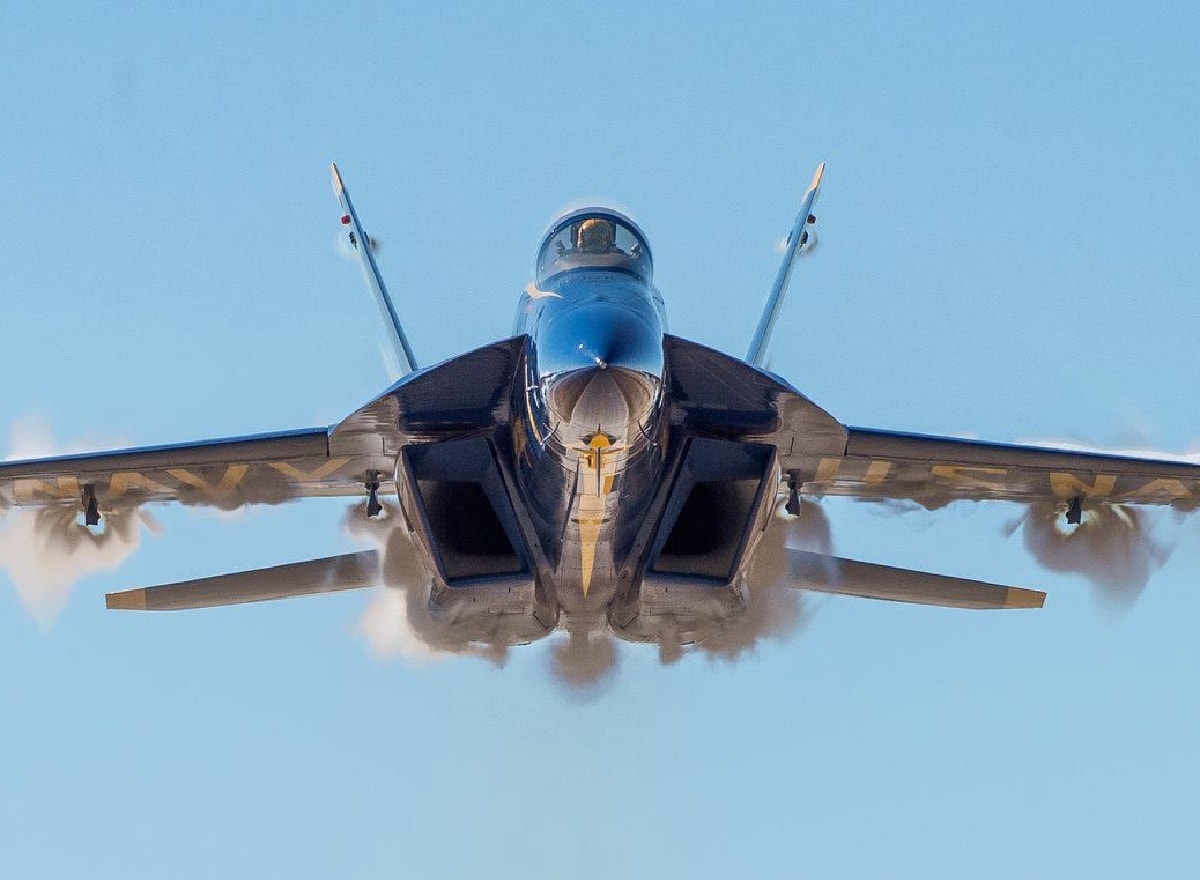F/A-18 Super Hornet Accident, Explained: There are many ways to lose an aircraft in war. Anti-aircraft missiles, enemy fighter jets, human error caused by fatigue, and strained airframe from the high operational tempo can all result in a lost aircraft.
But during peace, most aircraft are lost due to mechanical failure or human error.
It is seldom the case that a fighter jet with a price tag of more than $50 million rolls overboard from an aircraft carrier. And yet it seems that this is what happened when the U.S. Navy lost an F/A-18 Super Hornet late last week.
What We Know: Aircraft Overboard
On July 8, an F/A-18 Super Hornet assigned to Carrier Air Wing 1 and embarked abroad the USS Harry S. Truman aircraft carrier was blown overboard due to heavy seas caused by a storm in the Mediterranean Sea.
When the accident happened, the USS Truman was conducting a replenishment-at-sea operation (usually helicopters ferrying supplies to the aircraft carrier; smaller warships replenish by sailing next to the replenishment ship). And the F/A-18 Super Hornet must not have been secured down adequately.
“One Sailor received minor injuries while conducting operations during the unexpected heavy weather. The Sailor is in stable condition and expected to make a full recovery,” the Navy said in a press release, adding that “all personnel aboard the ship are accounted for.”
“USS Harry S. Truman and embarked aircraft remain full mission capable. Details and the cause of the incident are under investigation,” the Navy added in its short press release.
This is the third (and the second in the Mediterranean Sea) aircraft carrier incident involving fighter jets in the last few months.
The Royal Navy had the “honors” to start the unhappy string of accidents back in 2021. In November, the new British aircraft carrier HMS Queen Elizabeth II was sailing in the Mediterranean Sea on her way back to the United Kingdom to finish its inaugural operational deployment. An F-35B Lightning II stealth fighter jet was scheduled for a routine training sortie but went down immediately after taking off because an engine cover had been forgotten on the aircraft.
The second accident took place in January when an American F-35C Lightning II crashed on the deck of the aircraft carrier USS Carl Vinson while trying to land.
Safety Summit Before the Accident
The incident came a few days after the Navy held its first ever naval aviation safety summit. For two days at the closing of June, approximately 450 active-duty aviators, maintenance experts, aircraft carrier departmental leaders, and safety officers met in Norfolk, Virginia, to discuss safety standards across naval aviation.
“We’ve never done this with the safety community before, and now we have a Safety Summit with professionals ranging from petty officers and chief petty officers all the way up to commanders and commodores in the audience. We must be able to protect our country, allies and partners, and safety is a critical piece of that,” Vice Admiral Kenneth Whitesell, the Commander Naval Air Forces, said about the safety summit.
1945’s New Defense and National Security Columnist, Stavros Atlamazoglou is a seasoned defense journalist specializing in special operations, a Hellenic Army veteran (national service with the 575th Marine Battalion and Army HQ), and a Johns Hopkins University graduate. His work has been featured in Business Insider, Sandboxx, and SOFREP.

